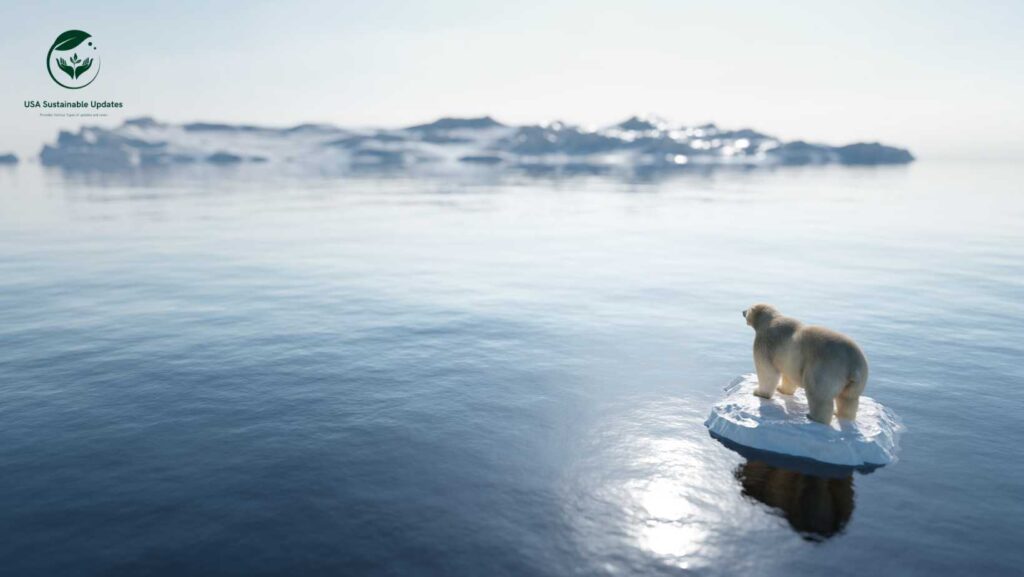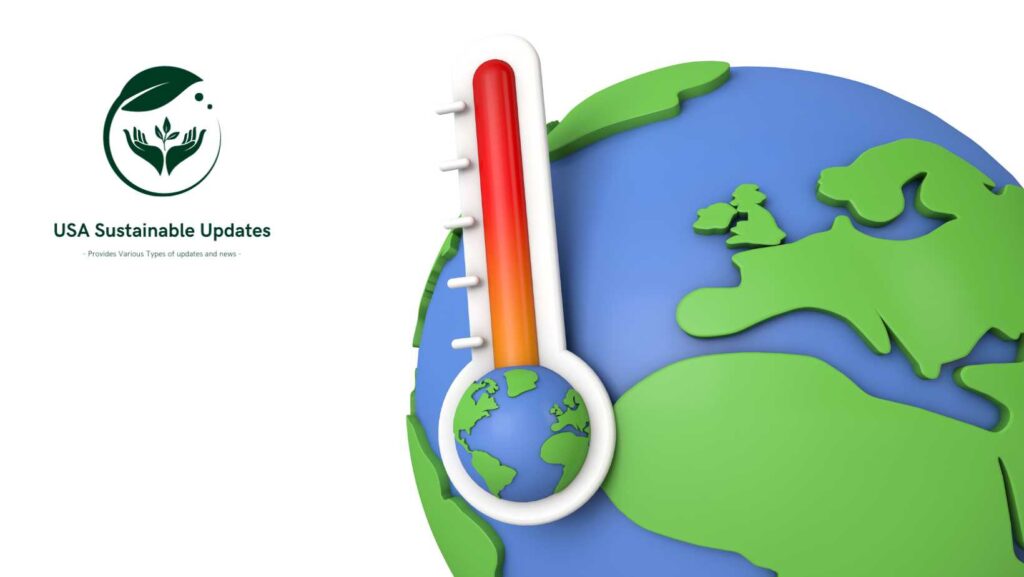Climate Change Impact: 13 Key Consequences You Must Know
August 20, 2023 | by usasustainableupdates.com

Climate Change Impact has emerged as one of the most critical challenges of our time, with its effects rippling across the globe. The gradual increase in temperatures, coupled with shifts in weather patterns and ecosystem dynamics, underscores the urgency of addressing this complex issue. In this comprehensive article, we will delve deeply into the multifaceted consequences of climate change, exploring how it affects our environment, economy, health, and societal structures, while also highlighting strategies for mitigation and adaptation.
1. The Warming Planet and Its Causes
The Earth’s temperature rise is inextricably linked to the mounting concentration of greenhouse gases in the atmosphere. These gases, primarily carbon dioxide and methane, are released through human activities such as burning fossil fuels, deforestation, and industrial processes. This influx of gases traps heat, resulting in a phenomenon known as the greenhouse effect, which leads to global warming. The intricate web of interactions among these factors drives the need for comprehensive action to curb emissions.
2. Melting Polar Ice and Rising Sea Levels
The thawing of polar ice caps and glaciers is a visual testament to the impact of climate change. As these icy giants melt, they contribute to rising sea levels, posing an imminent threat to coastal communities. The accelerated rate of melting, particularly in the Arctic and Antarctic regions, exacerbates the potential for irreversible damage. The resulting sea-level rise endangers not only human settlements but also fragile coastal ecosystems and biodiversity.

3. Altered Weather Patterns and Extreme Events
Climate change has led to a recalibration of global weather patterns, resulting in an uptick in extreme weather events. Hurricanes, droughts, heavy rainfall, and heatwaves have become more frequent and intense. The ramifications are extensive, affecting agriculture, water availability, and human infrastructure. Vulnerable communities are disproportionately affected, underscoring the urgent need for adaptive strategies and disaster preparedness.
4. Climate Change Impact: Biodiversity Loss and Ecosystem Disruption
Ecosystems, intricate tapestries of interdependent species, face upheaval due to climate change. The shift in temperature and habitat conditions poses challenges for species’ ability to adapt. Biodiversity loss, a consequence of species’ inability to cope, sets off a chain reaction across ecosystems. Coral reefs, rainforests, and Arctic habitats are among the most vulnerable ecosystems, and their degradation has ripple effects on ecosystem services and human livelihoods.

5. Impact on Agriculture and Food Security
The intricate dance of climate and agriculture is becoming increasingly precarious. Changing precipitation patterns, prolonged droughts, and erratic growing seasons disrupt crop yields and threaten food security. Agricultural systems must adapt to ensure resilient food production, considering factors such as crop diversity, soil health, and water conservation. The looming specter of food scarcity looms large, making this a priority issue.
6. Health Implications for Humans
Human health is intricately intertwined with the environment, and climate change brings new health challenges. Rising temperatures amplify heat-related illnesses, particularly in urban areas where heat islands form. Changing disease patterns, as seen in the spread of diseases like malaria and Lyme disease, necessitate innovative public health strategies. Poor air quality, exacerbated by wildfires and increased smog, compounds respiratory issues, especially in vulnerable populations.
7. Economic Challenges and Inequality
Economic systems are susceptible to climate change shocks. Extreme weather events lead to infrastructure damage, business interruptions, and inflated insurance costs. Agricultural losses ripple through supply chains, affecting prices and trade. Vulnerable communities, often marginalized, face disproportionate impacts, exacerbating social inequalities. The economic resilience of nations and communities hinges on proactive adaptation and equitable solutions.

8. Migration and Displacement
As climate change disrupts familiar landscapes, migration becomes an inevitable response. People in vulnerable regions are forced to seek safer havens, a phenomenon known as climate-induced migration. This movement can strain resources and infrastructure in host regions, leading to potential conflicts. Climate displacement necessitates comprehensive policies that safeguard human rights and provide support for those uprooted by environmental changes.
9. Renewable Energy as a Solution
Renewable energy sources, harnessing the power of nature, present a sustainable path forward. Solar, wind, hydroelectric, and geothermal energy offer alternatives to fossil fuels. Transitioning to these sources reduces greenhouse gas emissions, mitigates air pollution, and catalyzes economic growth in the renewable energy sector. Investing in renewable technologies is a critical strategy for curbing emissions.
10. International Collaboration and Policy
Addressing the global nature of climate change necessitates international cooperation. The Paris Agreement, a milestone in global climate policy, unites nations in their commitment to limiting temperature rise. Policy frameworks, both global and national, drive emission reduction targets, promote sustainable practices, and foster innovation. Concerted efforts at all levels are essential for achieving climate resilience and a low-carbon future.
11. Individual Actions for Change
While systemic change is crucial, individual actions cumulatively influence the trajectory of climate change. Reducing energy consumption, embracing public transportation, adopting sustainable diets, and minimizing waste are tangible steps individuals can take. The collective impact of these choices, when multiplied across societies, can drive significant change in emission patterns and resource consumption.
12.Climate Change Impact: Education and Awareness
Amid the complexities of climate change, education remains a cornerstone for driving action. Informing the public about climate science, impacts, and adaptation strategies fosters a sense of urgency and responsibility. Educational initiatives, media campaigns, and community engagement amplify the message of climate action, motivating individuals and communities to contribute to solutions.

13. The Path Forward: Mitigation and Adaptation
The dual approach of mitigation and adaptation is paramount in navigating the climate crisis. Mitigation focuses on reducing greenhouse gas emissions through cleaner technologies, forest conservation, and sustainable land use. Adaptation strategies encompass building resilient infrastructure, safeguarding water resources, and developing early warning systems for extreme events. Both strategies are symbiotic, reinforcing each other for a sustainable future.
14. Conclusion: A Call to Action
In conclusion, the profound impacts of climate change demand unwavering action from individuals, communities, governments, and industries. The interconnected web of consequences spans ecosystems, economies, and human well-being. By embracing renewable technologies, fostering international cooperation, promoting equitable solutions, and fostering individual responsibility, we can forge a path toward a more sustainable and resilient future.
15. Frequently Asked Questions
Q1: What are the main causes of climate change? A: Climate change is primarily caused by the emission of greenhouse gases from human activities such as burning fossil fuels and deforestation.
Q2: How does climate change affect biodiversity? A: Climate change leads to habitat loss, making it challenging for many species to survive and causing a decline in biodiversity.
Q3: What is the Paris Agreement? A: The Paris Agreement is an international accord aimed at limiting global warming by reducing greenhouse gas emissions.
Q4: How can individuals contribute to mitigating climate change? A: Individuals can reduce their carbon footprint by conserving energy, using sustainable transportation, and supporting eco-friendly practices.
Q5: Why is addressing climate change an urgent matter? A: Climate change poses significant threats to ecosystems, economies, and human health, making it
for more information you can visit our Blog, Thanks for reading.

RELATED POSTS
View all



